Podcast: Play in new window | Download
Show Notes
Today, we talk about easy plants for your yard. What are the best types of plants?
I cover the topic of annual plants and perennial plants and why these categories are important for you when you want a low maintenance landscape.
Show Notes:
- Today’s topic: what are annuals and perennials and what they mean for you
- How to use plants to save time and maximize beauty
Annuals
- Last for one growing season
- Need to replant each year
- Generally more beauty/pop/accent
Perennials
- Last multiple years
- Short story: Perennials need less planting and establishment
- Less work overall
- Design
- Planting
- Establishment
- Weeding
- Removal
Tips for using easy perennials
- Hardy, well adapted plants to region
- Sun
- Moisture
- Soil
- USDA zone
- fertility
- Disease & pests
- Beauty is secondary to hardiness
- foliage
- bloom
- structure
- mature size
- Determine long term maintenance needs
- Division
- Mature size
- Lifespan
- fertility
- Select plants before going to nursery
Low maintenance Annuals
- Some annuals are low maintenance
- Self-sowing annuals
- Repopulate in same space
- E.g. marigold at parents’ house
Links for today’s episode:
I’m Ben Hale your virtual design guide
to help you and your family have a
healthy beautiful landscape with less
work what’s up and welcome to episode 19
of the aesthetic ecosystems podcast guys
it is a great day here today I’m so
excited you’re here I hope you’re happy
to be here as well and we’re gonna have
a great episode as usual and I just want
to say you know I
when I’m recording this it is is
absolutely gorgeous outside right now so
I pre record these a lot of these
episodes so you know when I record it’s
a little bit before when you’re
listening to it but man it’s just so
beautiful and I’m sure when this episode
comes out it’s also gonna be beautiful
where ever you are and and that’s just
you know kind of my outlook on life as I
try and find beauty in every day and
some days I’ll be honest it can be
really difficult but I hope you work
hard to find beauty and every day and in
any way you can and to to savor that
beauty you know every day is a gift and
and it’s important for us to to figure
out how to how to make each day a gift
and even when it seems difficult so so I
hope you’re finding today finding beauty
in today’s today and finding beauty in
today and and just you know savoring
those moments that you can experience it
every day
all those little moments really add up
to make a big difference so Before we
jump in today’s episode I wanted to
share a little bit about the previous
episodes where where I was wrong that’s
right
the you know I don’t claim to be an
absolute expert on anything and you know
sometimes I question whether I’m an
expert on anything but um some of the
information I share you know it’s based
on my best knowledge and I’m trying to
help everybody each one of you in any
way I can and and so today I wanted to
share that that I shared some
information in one of the lawn care
episodes that
now I’ve come to realize is not accurate
so I mentioned about watering and how
it’s what time the day is best to
watering and usually it’s recommended
the earlier in the morning you water the
better before the day goes you know the
Sun comes up high in the sky
it gets really bright really hot and
active photosynthesis going on and then
it’s generally not recommended to water
in the middle of the day and same in the
evening but the middle of days was
previously considered kind of the worst
time and because part of that reason is
when droplets of water get on the leaves
it can burn the leaves your foliage of
your plants and actually you know leave
burn spots on your leaves well as it
turns out recent data has come out and
you know this was guidance even that the
the British Royal Horticultural Society
recommended but now I’m there’s some
recent studies that have come out from
some folks in Europe that conducted a
study and couldn’t find any difference
in leaf kill between plants that were
watered during peak sunlight hours and
so it’s well it’s still not great to
water during that time it’s not gonna
hurt your leaves apparently or at least
there’s no data to showing that there
that it will and going on the contrary
it actually you know it might not be bad
for your plants the only downside is
that you have a lot higher evaporation
rate during the hot hours of the day of
course so something to consider there
anyway I wanted to share that tidbit my
goal is to give you the best information
possible based on the information that I
know and and of course yes sometimes I
might say something that isn’t accurate
or is dead wrong and in this case you
know it’s it’s some new findings that
have come out in recent years that I
wasn’t aware of and and while it’s still
not you know definitely not ideal to
water in the middle of the day you’re
not gonna apparently you’re not gonna be
killing your plants like previously
thought anyway let’s get into the meat
of the show today today’s show is about
annuals and perennials for your yard you
may hear a lot about annuals and
perennials you might not even know what
the difference between them are to be
you know there are two very similar
terms and they refer to different growth
habits of plants and life cycles of
plants and sometimes it’s to remember
hard to remember which is which so we’re
gonna get into that today
and we’re gonna try and understand what
is the best for your yard when you’re
looking to design a beautiful and
low-maintenance landscape so you’re
looking to save time in your yard right
that’s why we’re here is is to save time
that’s my goal with this podcast to help
you to save time in your yard and so you
can have more time to do more valuable
things with your life so what are
annuals and perennials and what do they
mean to you that’s really what we’re
gonna try and talk about today I’m gonna
try and cover that broad question or
those two questions and to really help
you understand what it means for you in
your landscape and also I want to help
you learn how to use either annuals or
perennials to save time and maximize
beauty so first what about annuals what
are annuals so annuals are plants that
last for one growing season so this is
something in northern latitudes or
middle latitudes like the Midwest here
usually you have plants that once the
frost kind of falls out and you you
start to warm up a lot of plants will
start growing you know that’s the
beginning of the growing season and then
throughout the summer throughout the
warmer months they’ll grow they’ll
flower they’ll go to seed and they
complete their life cycle all on that
one growing season and then so by the
the frost or by the colder months
they’re finished they’re done and and
that’s it and then the next year it’s
the next generation of that species that
comes up and grows so that’s kind of the
life cycle of an annual plant when
you’re talking about annuals in your
garden these are plants that you need to
replant them each year because of that
so let’s take for example a zinnia very
beautiful flower you can get it as a
start or start it from seed in your own
garden but um you plant it it’s it
provides you a lot of beauty
but then by the end of the season it’s
done and you’re going to need
replanted again so so that’s an example
of an annual and and while they can
provide a lot of beauty they they also
are potentially more work because you
have to plant them at the same time so
the thing with annuals is you you can
actually generally get more beauty so
the summer annuals are very beautiful
they’ve been cultivated to to provide a
lot of beauty in a short amount of time
with their their life cycle but they’re
also at the same time more work so you
get more Beauty a more of a pop more of
an accent but they’re also more work
because you have to plant them each year
into potentially either grow them from
seed or access them from some sort of
new nursery stock okay so that’s the
short story on annuals so basically
again just a quick recap you get it for
a short period of time you can get a lot
buta Beauty out of them it provides you
a lot of versatility from year to year
if you like that you know change in
style factor but the trade-off is it’s a
lot of work to to plan to plant and to
maintain so each time you plant them you
have to make sure you’re establishing
them properly to make sure they get off
on the right foot or the right route and
sorry that was like a really bad dad pun
I guess but hey I’m a dad and I’m really
working hard on I’m getting some good
ones anyway alright so at your expense
let’s move on to perennials so
perennials are your plants that last for
multiple years so some perennials are
short-lived perennials a lot of your
herbaceous flowers our short-lived
perennials and some of them are very
long-lived perennials can last for many
many many years and so example of
short-lived perennial is actually a very
popular echinacea purpurea is your
purple coneflower and that generally
we’re actually we have some that are a
couple years old right now in our front
garden or what’s left of our front
garden and and they’re kind of fizzling
out this year so they really need to be
a lot of those types of plants they do
every few years and they need some work
to be divided and once you divide the
roots a lot of times they’ll they’ll pop
back the following year so usually you
do that when the end of the season
the end of the growing season when
they’re starting to become doormen is
the best time to divide most plants but
you know that’s a general recommendation
it’s important to whatever plant you
have to just check what the best time to
propagate it is and to how to take care
of it so anyway I’m a little too much
detailed us so perennials are the plants
that last multiple years
and the short story for perennials is
that they need less planting and less
establishment because you’re only
establishing them once or maybe every
couple years and that’s it
and so while I’m you know trying to give
this a an unbiased perspective about
these plants I think it’s pretty obvious
which my favorites are and so let’s just
talk a little bit more about perennials
so for perennials you’ve got less work
overall that’s the real message here is
from a design standpoint from planting
from establishment weeding and removal
so for the design phase you know you’re
talking about one time you plan how or
what perennials you want to have in what
space how big they’re gonna grow how
often you might have to divide them and
how far ever spread they’re gonna make
if they’re a spreading type of plant if
they’re a clumping plant plant you just
plan how many do you need how often do
you do you need to divide it if it just
needs division every couple years or how
often you might need to replant it with
the same plant from planting and
establishment I think that speaks for
itself
you have to do it less often right the
weeding piece and removal piece once
your plants are better established you
have less weeding because you have less
disturbance of your soil and you also
have less takes less exposed soil over
long term so so it actually leads to
fewer weeds which is really awesome and
you know there’s a piece a lot of people
overlook with perennial plantings so
it’s something to consider there for
sure and of course with the annuals you
have to remove the dead material and
actually sometimes dig it out of the
ground or whatever which is I guess a
bit more rare but perennials you know
you kind of just kind of pull back the
dead material quickly and leave the
roots for the next growing season and
that’s it so here’s some tips for using
perennials so if it’s not obvious
already my
preferences perennials because there are
a lot less work so in our landscape we
have primarily perennial plants I mean
in my design principles I use primarily
perennial plants now there are a few
exceptions which we’ll get into later
but for now let’s just focus on some
perennials and how to use them
appropriately because if you do not use
your perennials appropriately they can
be a lot of work and that’s not what we
want here so first you want to select
plants that are Hardy and well adapted
to your region so if you don’t select
plants that are well adapted to your
specific location and to your region
you’re gonna be dealing with a lot of
work through amendments and taking care
of them over the long term and that’s
not what we want what we want here is
something that we can establish get on a
good footing pretty quickly hopefully
and once it’s going it’s kind of leave
it on its own and and take care of it
every once in a while not have to deal
with disease issues or feeding issues
fertility issues or any sort of plant
weaknesses that might need work or
irrigation so we want to avoid as much
of that as possible and and so there’s a
lot of several factors to consider I’m
going to point out a few here and and of
course the other piece with that too is
that we want to get a moat the most
beauty out of that as possible you know
here we’re not talking about just kind
of leaving your landscape go to to
natural scrub land or whatever or to be
invaded with you know your your local
palette of invasive exotics here we’re
talking about getting a lot of beauty
but also reducing work as much as
possible and so how do we do that with
our perennials well with your hearty and
well adapted plants what we’re talking
about here is you want to look at the
specific area you’re planting or you’re
planning for and you want to understand
what’s the Sun requirements for that
area and match that to the plant what
what type of sunlight the plant can
tolerate
same with moisture so what’s the
available moisture in that area you know
you might have some high spots and low
spots and those are going to be very
different in their moisture
over time and and also what’s the the
general climatic moisture in your area
so do you have very very dry summers for
example and you also want to understand
your soil so I’ve recommended many times
to get a soil test and this is another
great reason to point out why it’s
helpful to have a soil test from your
local County Extension Office your local
University Extension or there’s several
other kind of private soil testing labs
as well you can find and and sow a soil
test will tell you what type of soil you
have how much organic matter you have
what’s your fertility what type of
mineral availability you have and those
sorts of things what’s your pH these are
all very important for understanding
what plants to put in that specific area
so next you want to understand and this
is these aren’t in any specific order
that I probably should have mentioned
this first is what’s your USDA zone
that’s kind of like one of the basic
things to understand about your space
when you’re thinking about plants is
what’s your USDA zone and what that is
if you’re not familiar with it is is the
United States is divided up kind of
almost with horizontal lines going
across latitudes but there’s there’s
changes of course with the mountainous
regions in the West and various weather
changes throughout the United States
that affects this but but in general as
you go up north across the United States
you you go you go down in number for you
your USDA zone and this basically is
rated on the low temperature of the
areas the average low temperature over a
general time period and these numbers
basically tell you what plants can grow
in that condition so if you grow a plant
that’s adapted to let’s say an avocado
tree right something a lot of people are
familiar with you can’t grow avocados in
southeastern Ohio outdoors because they
can’t survive the winter so the roots
will actually die because the soil gets
too cold in vice versa a lot of apples
for example they’re not native to you
know North America but but apples can’t
actually grow
in the southern climates because there’s
not enough cold for for the plants to go
through their lifecycle as there’s
they’re adapted to and so there’s kind
of trade-offs both ways and of course
with these climatic changes as well you
have differences and a moisture
availability and evaporation rates and
all sorts of other things and so it’s
important to make sure that you’re
planting a plant that is adapted to your
USDA zone okay so the other piece is
fertility I kind of touched upon it with
the soil piece but if you have very low
fertility this is something you can
adjust over time it’s not something you
can kind of just flip a switch but but
if you’re establishing in garden bed or
whatever you can really do a lot to help
boost the fertility with addition of
amendments specifically compost and
topsoil and something may have to manage
over the short term if you really want a
higher fertility space but there are
also plants that are adapted to low
fertility conditions so understanding
what your fertility is in your space and
what you’re willing to do to maybe nurse
the plant in the short term if it needs
a higher fertility or to select plants
that are really well adapted to your
your lower fertility conditions the next
is disease and pests of course
so what plants are disease resistant so
understanding what what susceptibilities
the plants you’re considering have and
and if there’s alternatives that that
may be closely related or may just have
similar structure and form or color that
you’re looking for and that you could
trade off to obtain the the desired
outcome with with more resilience so
those are kind of some tips for
selecting Hardy plants for your region
and also your specific space and the
next point I want to make is that beauty
is secondary to hardiness so you may
really really want like your your
awesome I don’t know an orchid right you
may you may want an orchid garden in
your front yard right so just to kind of
pick an extreme example well
orchids aren’t exactly a
did to most people’s front yards and so
it’s actually a pretty extreme condition
for something like an orchid to grow and
so you can’t just have you know that’s
why you don’t partly why you don’t see
orchid gardens in people’s front yards
right as it’s a lot of work to maintain
the conditions necessary for that plant
to thrive and to do it in a way where
it’s going to provide beautiful being
blooms on a consistent basis frequently
enough free to enjoy it so that’s just
an example of first you want to select
for hardiness and adaptability to your
space and secondly then you look for
beauty okay so so what plants are
adapted to my space and then what of
those types of plants provide the beauty
I’m looking for or similar types of
beauty that I’m looking for for my space
so that’s kind of so a way to think
about it and so when you’re talking
about that of course you want to think
about your foliage so the kind of the
texture of your foliage or the color the
bloom the same thing so your your size
of blooms your colors of blooms the
timing of your blooms the structure of
your plants so how does it look is it a
loose structure it is a very dense
structure does it provide like a
columnar form or an upright form or is
it kind of a spreading thing those are
all important things and then of course
the mature size as well so if you’re
talking about a grunt ground cover
it’s a spreading ground cover how wide
will it spread is it indefinite how over
what timeframe or if it’s a clumping
type perennial how why does the clump
grow how tall is it growth it’s you know
next to your front window you don’t want
it to completely cover your front window
after two years or by the end of the
growing season you know you know if you
plant a bunch of sunflowers right in
front of your front window they’re gonna
be covering up your front window by the
end of the summer same with trees or
shrubs this is very very important
because those are generally even longer
term plants so it’s really important to
consider those so after we consider all
those kind of design and beauty aspects
we also want to understand our long-term
maintenance need for perennials so do
you need to divide them
every few years so this goes back to
what I said earlier in the episode about
some perennials they’re actually
short-lived perennials but you can
extend their lifespan by dividing them
so they kind of get in renewed vigor by
you know you’re actually stressing the
plant but what it does is it is it kind
of forces the plant to put out new roots
and almost kind of like turns it into
the younger plant again and and then you
have two plants because you’re dividing
it right so do you need to divide them
every few years do you do you understand
the mature size of the plant just to
echo that again because it’s really
important
what’s the lifespan of your plant so is
it a two year perennial so a biennial
right or is this a 20-year plant or does
it kind of fade off after about four or
five years and you should consider a
replanting schedule so these are all
things you want to figure out and
determine what are your interests to
maintain that and whether it fits into
your lifestyle and last of course long
term maintenance needs we want to
understand what’s the fertility needs of
this plant so this is anything from your
lawn to your gardens to your trees that
you have in your landscape what are the
long-term fertility needs and does that
match what you have available on your
site or does it match the amount of work
you’re willing to invest to maintain
that fertility and and that’s really
important because if your plant doesn’t
have the right amount of fertility it
doesn’t have the right amount of health
it’s going to be going to be susceptible
to disease and stress issues and you’re
going to deal with a lot of problems
then and it’s going to be a lot more
work so you kind of see how this all
fits together okay and of course the
last thing I want to point out here with
your perennials is you want to do this
whole selection process before you go to
the nursery because once you have the
nursery you’re going to be overwhelmed
by all the choices in front of you and
it’s a poor display of information
you’re looking at the plant itself as
opposed to trying to understand all
these elements to determine what’s the
right fit for you and here’s the reality
nurseries don’t always supply the
low-maintenance plants that are best for
your landscape
they’re going to supply what creates
sales for them so what what makes the
nursery money and if people are going to
buy it then they’re going to try and
provide it for you and so that doesn’t
mean that everything at your local
nursery is going to be the best plant
for your landscape that’s kind of up to
you or your designer to decide if you if
you’re trying to work with a designer
here but make sure again as I’ve said in
previous episodes that your designer
understands your intent for a
low-maintenance landscape because a lot
of designers design for beauty and so
you want to make it abundantly clear
that you’re looking for a landscape that
has beauty and less work and and so
that’s just an aside there to make sure
that if you’re working with somebody
else on this that you really make it
clear to them that that your intent is
to reduce the amount of time you have to
spend a unplanned you know you want to
be able to be in your landscape when you
want to not when your plants want to I
guess that’s what I’m trying to
articulate here so so yeah make it on
your terms right maybe you do want to be
in your landscape you don’t have to be
working in your landscape you want to be
enjoying it right so make sure that’s
abundantly clear to both yourself or the
person who’s designing your landscape
okay so yeah select your plants before
you go to the nursery that’s that’s a
very very common mistake and it gets us
into a lot of trouble I’ve been there
I’ve done it I probably do it again
someday and I will kick myself for it so
just make sure you’re aware of that
because it will help you plan things
appropriately as opposed to make
mistakes that are going to make you have
to go back to the nursery again for
something better for your space okay so
the last piece I want to say here after
we’ve so we’ve kind of wrapped up what I
wanted to say about perennials okay now
I want to step back to annuals once more
just very briefly and to point out that
some are low maintenance and you know
you you’re probably thinking hold on a
minute you just said annuals are more
work because you have to plant them
every week every year
well that’s true for the most part
however there are some annuals that are
self reseeding okay so that basically
means once they can
their growth cycle they’ve flowered
they’ve gone to seed and then they
actually dropped their seed okay so
those seeds some some annuals are
vigorous enough where those seeds will
self Rieger Minh eight the next year and
you’ll get a space or an area that that
is very abundantly reproduced with the
same annuals year to year now you may
have to manage it somewhat to reseed it
on occasion or to kind of you know pull
out the ones that are are spreading to a
space you don’t want but in general you
can get some annuals that give you the
effect of a perennial essentially where
you don’t have to be out there actively
maintaining the space and you get the
beauty want out of the manual
so essentially what they’re doing is
they’re new plants repopulating in the
same space so they’re filling the space
that was left by its parent the previous
year so a great example of this is a
little small grouping of marigolds in my
parents front yard so when I was pretty
young I planted some marigold seeds in
my mom’s front garden I’m sure it was
with her permission and these marigolds
have essentially come back every year
for many many years and I you know to be
honest I haven’t popped my head out
there to see if if they’re there this
year or not but but these these
marigolds are an annual generally
speaking at least in our climate this
type of marigold is an annual and and
however though the the seeds have
dropped each year in that same space and
we get a couple marigold plants that
come back up every year in the same
space since it’s a nice little pop of
beauty of deep orange and yellow and a
little bit of red that we get each year
in late summer so it’s pretty fun so
that’s an example of a very
low-maintenance annual that’s just kind
of taking care of itself for many years
on end so that’s essentially what I have
for today guys this is a relatively
short episode compared to some of them
but I hope you’ve gotten a lot of value
out of this and I hope this has given
you clarity on
the difference between annuals and
perennials and also understanding what
that means for your landscape so that’s
really important is to understand what
what translates to less work but still
getting a lot of beauty out of your
landscape that’s why we’re here is we
want to take away the work from our
landscape that’s required for ongoing
maintenance and we want to give that
work back to something more important
and we’re going to give that time back
to something more important so something
more important for your life that you
can follow your passions spend time with
your family have more time to just relax
right
all those things are very important and
and we don’t need to be spending it on
just maintaining our landscape and so
that’s what these episodes are all about
and I hope you’ve enjoyed them so far so
one thing I want to say before we go is
that I have a low maintenance plants
giveaway where there’s a short list of
some examples of low maintenance plants
that are most likely going to work well
in your landscape now I will put the
caveat in that you know I’m best at
understanding what works for the eastern
United States and so a lot of these
plants are specific to the eastern
United States now that said there are a
lot of similar species that are on this
list that are also adapted to the
mountainous regions or the western US so
across the Rockies over ready you folks
over in California and such so it’s
still worth checking out and it’s a good
reference just to understand a few
examples of plants a lot of these are
actually native plants too which is
really cool so you get a lot of beauty
but you also know that you’re you’re
kind of helping the native environment
at the same time so it’s pretty cool so
go check it out I have a link in the
show notes here for you so you just go
click on that link you can get your low
maintenance plants giveaway and with
that too if if this is something where
you’d like a little bit of help on I do
offer consultation so if you want to
check out my consultation options you
can go over again check a link in the
show notes or go over to aesthetic
ecosystems comm slash consulting and you
can see the options right there with
that guys you know I want to say ask a
question on the podcast page aesthetic
ecosystems calm
/ pod and they’re right in front you’ll
see a button to click and ask a question
you can get an answer directly for me if
you like if you have any questions about
your landscape and of course all these
links are going to be in the show notes
so with that go out get in your
landscape make positive difference in
your life thanks for tuning in and make
sure you live with passion and make
tomorrow better than today
[Music]


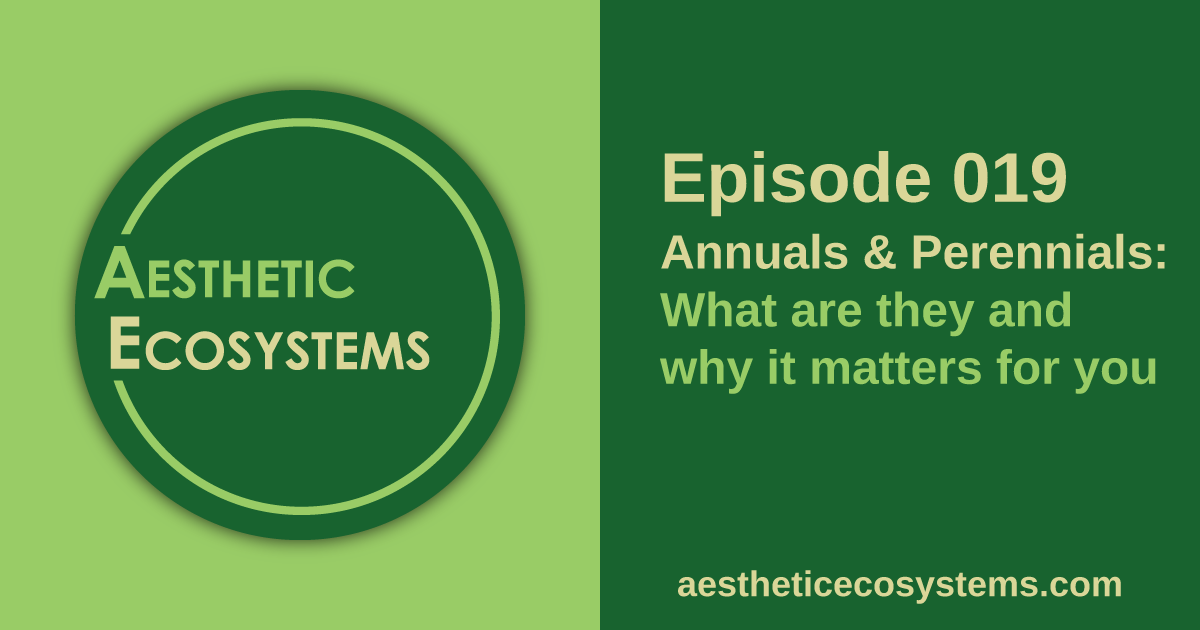
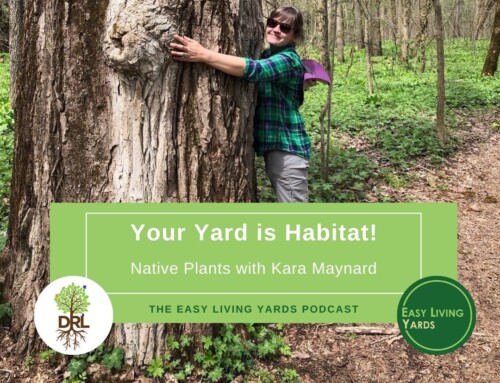

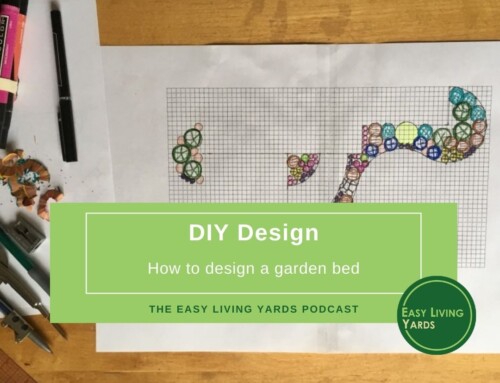

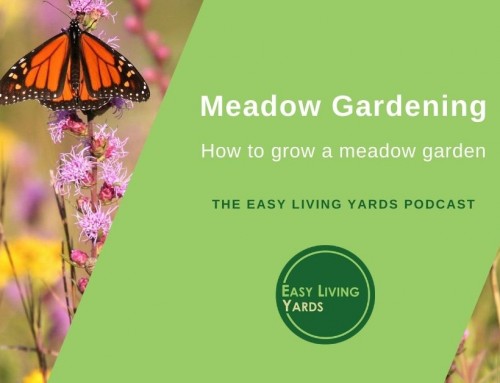
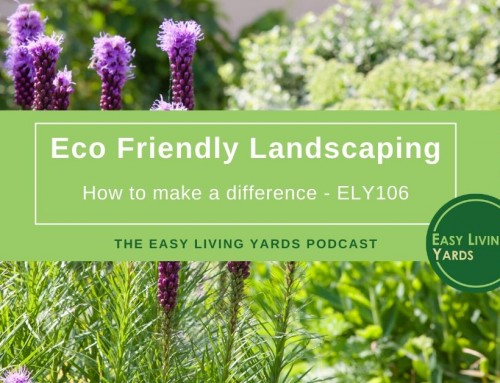
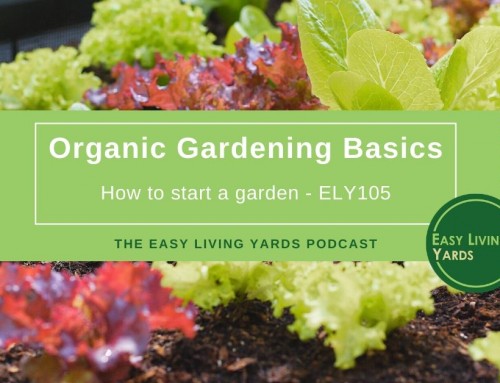
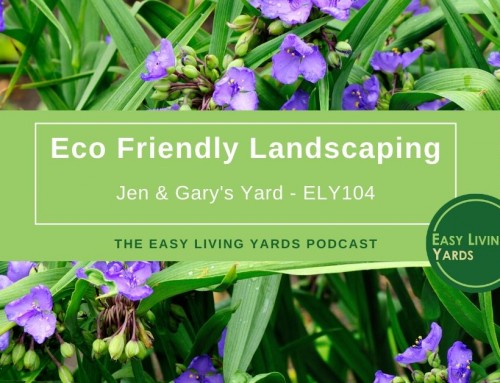
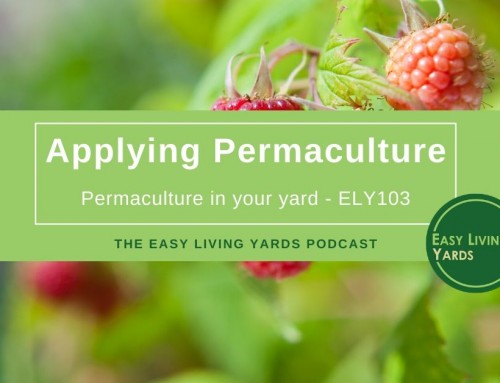
Leave A Comment